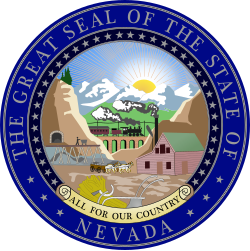| |||||||||||||||||
| |||||||||||||||||
 County results Blasdel: 50–60% 60–70% 70–80% Winters: 50–60% No data/vote: | |||||||||||||||||
| |||||||||||||||||
| Elections in Nevada |
|---|
 |
The 1866 Nevada gubernatorial election was held on November 6, 1866, to elect the governor of Nevada. The incumbent Republican Governor of Nevada Henry G. Blasdel won re-election against Democratic nominee John D. Winters. [1]

